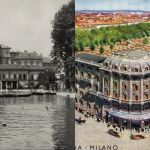
Milan Design Week 2019 and the Instagram effect
Reflections on the success of the Milan Design Week and the impact of Instagram on the event

April 16th, 2019
With a rainy weekend, the Milan Design Week 2019 came to an end, an announced success that exceeded the expectations of last year’s edition. More than the numbers, describing the success of the initiative was the atmosphere that characterized the city over the 5 days of the event: from the artisanal labs of Isola to the historic buildings of Corso Venezia, to the boutiques in Via Della Spiga, the studios in Lambrate and the repurposed spaces of the Fabbrica Del Vapore, everything was open, lively and active part of a collective conversation.
The Design Week is becoming the real branding moment of Milan, more than the Fashion Week, still entrenched in its catwalks and exclusive shows – and of other big manifestations. It attracts the attention of the global creative community, and the organization managed to understand the lifting of the barriers between art, design and entertainment, turning an event created for the insiders into a real happening where the city is the true protagonist, together with its citizens, brands and buildings. The success and the nature of the MDW are much more influenced from the mainstream cultural world rather than the design world, and that’s why it chases global trends, risking to lose its identity while remaining stuck in what we could define the Instagram effect.
The (almost forgotten) epicentre of the MDW is the Salone del Mobile in Rho Fiera, which this year registered more than 180k visitors – 12% more than 2017, last edition of the light-office biennial – coming from more than 180 countries in the world. Among the pavilions of the fair, the protagonist has remained the product rather than the idea of design, reissued in many forms and perspectives in the Fuori Salone: a web of more than 1200 events all over the city, of every kind and type, which interpret in the most various ways the significance of design and aesthetic in 2019. The theme of this edition was sustainability, which translated into a triumph of furniture made with upcycled plastic, recycled materials and studies on global pollution.
The biggest fashion houses have activated, from Gucci to Converse, but also Louis Vuitton, Stone Island and Prada; the cultural spaces of the city, from the private ones like Spazio Maiocchi to the cloisters of the Università Statale registered more than 200k visitors for the interior design installations. Milan itself has become the setting of temporary works of art, like the "Maestà Sofferente” by Gaetano Pesce in Piazza Duomo. There was no lack of parties – whether they were aperitifs or after dinner events – like the Floristeria at Fabbrica del Vapore to the spaces of Via Ventura in Lambrate.
Walking around the different areas of the city, Lambrate, Isola, Brera, Tortona, Porta Romana & Parenti and Porta Venezia, I had a hard time managing to pay attention to everything there was to see: every shop window would hide a showroom, I didn’t have time to take a picture of the unzipped palace by Alex Chinneck, that I was already inside the Lamborghini stand in front of a flaming Huracan, and right after that I was catapulted in a Japanese garden at Canada Goose.
An interesting and quite confusing experience, still to be processed, considering the limited time and the superficial knowledge of such different worlds brought together only by aesthetic research. The way the audience interacts with these types of cultural events is by taking their phones in their hands and snapping a picture, posting it on Instagram or sending it to their friends. I don’t mean to judge, it’s just a matter of fact taken into consideration also by designers and creatives. A figure that wasn’t reported on the newspapers is that by summing the hashtags related to the MDW on Instagram we get almost 2 and a half million posts, without considering the numbers of Ig Stories, real protagonists of contemporary Instagram.
Whether you like it or not, online awareness is one of the main objectives of the brands and artists taking part in the Milan Design Week, and we can’t hide the fact that Instagram is influencing the artistic production and the creative choices of the brands, many of the installations – like Human Proportions by Massimo Iosa Ghini or the Echo Pavilion of Palazzo Litta – were designed to make the user digitally interact with them, instead of just admiring it. Nothing too scandalous, museums all over the world are filled with Instagram-friendly pieces of art and the art market obeys to the law of demand and supply. The risk, though, is that the general creativity of an event open to the public and involving such different realities might be damaged. Right now the MDW has the honour and the responsibility to represent and showcase the best of Milan (and Italy) in a participative manner while still maintaining an original and innovative soul.
In the next Design Week editions what can’t be ignored is that the infinite scrolling will sooner or later become boring, trends fade and the audience might not be happy with just a distorted mirror perfect for a selfie, to be shared with the hashtag #MDW.





















































